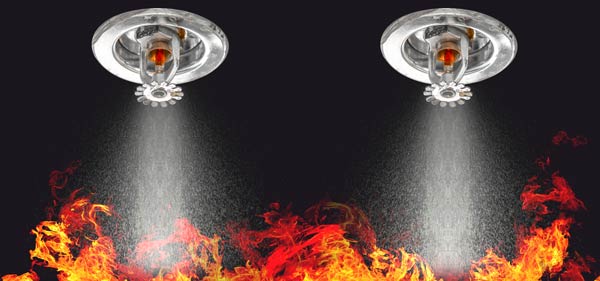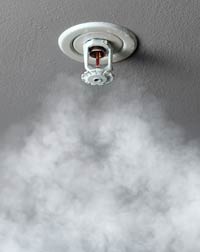
Are Five-year Internal Sprinkler System Inspections Really Necessary?
For more than 15 years, the National Fire Protection Association (NFPA) has required internal inspection of automatic sprinkler systems every five years, outlined in its NFPA 25 Standard for the Inspection, Testing and Maintenance of Water-Based Fire Protection Systems regulation. However, many organizations do not comply, often because the municipality has not adopted NFPA 25 or does not enforce it. Yet when properly maintained, automatic sprinkler systems have a 97-percent success rate in controlling a fire.
“Even if your municipality doesn’t follow NFPA 25, PDRMA encourages your agency to meet those requirements,” says Tim Lenac, PDRMA Risk Management Services Supervisor. “They are best practices for maintaining your sprinkler system and managing property risk.”
There are two types of systems — wet and dry. In a wet system, water sits in the pipes waiting to respond to the need. In a dry system, air in the pipes trips the system when needed to suppress a fire.
“You want to have heat available if you have a wet-pipe system, to avoid pipes freezing,” explains Lenac. “If you’re designing a new system and know you won’t always have heat in the area, consider using a dry system instead.”
Why Inspect the System?
 Traditional wet-pipe sprinkler systems consist of black steel or galvanized steel pipes, subject to corrosion. Many members have buildings and sprinklers that have been in service for 20, 30 or even 50 years. “Over time, corrosion causes pipe-wall thinning, and scale and sludge build up inside the pipes,” says Dan Fritz, Senior Consultant, Kodiak Fire Protection, a PDRMA vendor partner. “Corrosion is greatest where air, water and steel mix, and high points in a system where air may get trapped are of special concern.” Traditional wet-pipe sprinkler systems consist of black steel or galvanized steel pipes, subject to corrosion. Many members have buildings and sprinklers that have been in service for 20, 30 or even 50 years. “Over time, corrosion causes pipe-wall thinning, and scale and sludge build up inside the pipes,” says Dan Fritz, Senior Consultant, Kodiak Fire Protection, a PDRMA vendor partner. “Corrosion is greatest where air, water and steel mix, and high points in a system where air may get trapped are of special concern.”
“Some PDRMA members already know what can happen when pipes fail in a sprinkler system — fire losses that can be costly in both dollars and business interruption,” adds Lenac. “They very well might have avoided such a situation, if they incorporated regular inspections into their maintenance schedules to address that risk.”
Additional considerations regarding pipe corrosion include:
- Water supplies have different microbiological activity levels, which can increase corrosion and scale build-up in your pipes.
- Not all steel is the same — some types are more prone to corrosion and scale build-up.
- Thin-wall pipe, introduced over the past 30 years, may corrode faster than older, thicker standard-wall sprinkler pipe.
- Thinning walls in sprinkler pipes can eventually lead to leaks which, in turn, can mean costly repairs and extended building downtime.
- Scale build-up within the pipe blocks the small sprinkler openings, restricting water flow and rendering the sprinkler system ineffective — which is no help in the event of a fire.
What Does an Inspection Involve?
Be sure to use a licensed and insured contractor for the inspection. She should inspect the inside of the pipe, evaluate the system and identify potential areas where there might be trapped air in a wet-pipe system or where water can settle in a dry system. “The goal isn’t to inspect every piece of pipe,” explains Fritz, “but to look at a representative sample and the areas with a greater likelihood of corrosion.
“If you’re renovating or adding on to a facility and have to shut down and drain your existing sprinkler system, that’s a perfect time for an inspection. Your sprinkler contractor is already on-site, so have her conduct the internal inspection at the same time.”
“Don’t waste the investment you’ve already made in your building’s automatic sprinkler system,” adds Lenac. “A five-year inspection helps ensure your fire protection system will be ready if needed to protect your agency’s property, employees and patrons in an emergency.”
|

